2019 | Forum
Readings for the Present Day
After long-term section head Christoph Terhechte left the Forum in the summer of 2018 to pursue new projects, Milena Gregor, Birgit Kohler and Stefanie Schulte Strathaus took over the interim leadership of the section for 2019. In this interview, Birgit Kohler (responsible for the main programme) and Stefanie Schulte Strathaus (responsible for “Archival Constellations”) discuss common threads and the special relationship between image and sound in this year’s selection, as well as the significance of film history for the present day.

Greta Kostka and Andrea Maier in Die Kinder der Toten by Kelly Copper and Pavol Liska
Is there a common thread running through the programme this year?
Birgit Kohler: Oh, yes! Numerous films are based on literature or work with letters, poems and other forms of writing. The range of formal approaches taken to this subject matter is broad. With Die Kinder der Toten Kelly Copper and Pavol Liska have transformed Elfriede Jelinek’s novel of the same name into a silent film with brass-band music. It is a “Heimat” (homeland) horror movie filmed on Super 8. The performers are the inhabitants of the book’s actual locations and they haunt the Styria region of Austria as Nazi widows, zombies and Syrian refugees.
A rather more classic literary adaptation – at least at first glance – is Rita Azevedo Gomes’ A portuguesa (The Portuguese Woman) based on Robert Musil’s novella. It has gorgeous costumes and opulent visuals – but it too contains cracks. At various moments Ingrid Caven suddenly pops up and coos songs in her inimitable way.
The list goes on: So Pretty is an adaptation of Ronald M Schernikau’s 1980s novel “So schön”. In it, Jessie Jeffrey Dunn Rovinelli transfers the everyday and political activities of the West Berlin gay scene to a queer flat-share in contemporary New York. There, he renegotiates the possibilities of how love and togetherness can be organised. The film is a literal re-reading: some passages from the novel are presented in rehearsed readings. And, in Peter Parlow’s The Plagiarists, a passage from Karl Ove Knausgård’s “Min Kamp” (“My Struggle”) plays a central role. The film is about a young couple: she is a wannabe novelist, he a would-be filmmaker. This enables Parlow to directly confront literature with film and to explicitly explore the question of when the everyday becomes art.
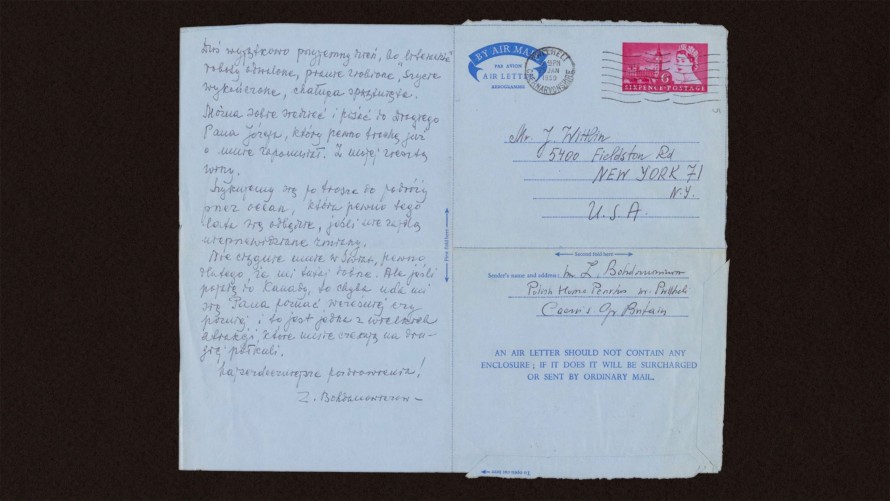
MS Slavic 7 by Sofia Bohdanowicz and Deragh Campbell
Are books and writing just central motifs, or can more be read into their deployment?
BK: I wouldn’t want to interpret this as a trend. By selecting these works, we chiefly want to create a discursive association. And writing doesn’t just function as a motif. Sofia Bohdanowicz and Deragh Campbell focus on letters: the literary remains of a female Polish poet who emigrated to Canada after World War Two. Incidentally, the title of their film – MS Slavic 7 – is the library shelf mark for these papers. On the one hand, analogue writing is a visual motif in the film. But at the same time, its material nature is constantly emphasised. The film begins with a full-screen shot of the open pages of a book in which a poem is printed.
At a time when the term “fake news”, strongly connected to a distrust of images and the truths they contain, is being vociferously debated, the image of writing powerfully stands out. In addition, it appears that in many works in this year’s programme the components of image and sound have been decoupled...
BK: That’s right. This year we’ve seen a great number of films that deliberately work with a discrepancy between image and sound.
One of these is Breathless Animals...
BK: Breathless Animals works exclusively with archive footage. Off-camera you hear interviews the filmmaker Lei Lei made with his mother - about the time of the Cultural Revolution and what it meant for the family. Lei has juxtaposed this with found footage: images that tell a different story to the mother’s tale of suffering; emblematic shots of Chinese architecture and furniture design, bicycles on the streets... Taking this private sound recording and public visual material as a starting point, Breathless Animals creates two alternative visions of life in China.

Li Chuan in Chun nuan hua kai (From Tomorrow on, I Will) by Ivan Marković and Wu Linfeng
Chun nuan hua kai (From Tomorrow on, I Will) achieves something similar for the present day. Ivan Marković and Wu Linfeng reveal the living conditions of two young migrant workers in Beijing. They live in an underground shack and share a single bed: one works during the day, the other at night. The film uses its photographic composition to simultaneously tell two stories: one of the rapidly growing, luxurious Beijing and one of the precariousness associated with this.
Breathless Animals confronts the verisimilitude of the mother’s account with the public images. Would you agree that Kameni govornici (The Stone Speakers) also explores the truthfulness of certain narratives?
BK: Igor Drljača depicts four places in contemporary Bosnia and Herzegovina where capitalism was introduced after the civil war, but where there has been no improvement in economic conditions. There, centres of tourism have developed around peculiar events like apparitions of the Virgin Mary. Superficially, this can be discounted as a harmless curiosity but, with an eye on phenomena like fake news, it becomes alarming because historical narratives are being constructed that exacerbate ethnic divisions. People are holding onto esotericism and concocted stories instead of the facts.

Lapü by César Alejandro Jaimes and Juan Pablo Polanco
In contrast to Kameni govornici, where spirituality masks a deficiency of some sort, in Lapü the motif of the spiritual appears as a part of an Indigenous identity...
BK: Lapü depicts a ritual of the Columbian Wayuu people. They bring the dead back from the grave in order to wash them. The directors César Alejandro Jaimes and Juan Pablo Polanco devised the film together with the protagonists. They are particularly interested in the faces of those present during the ritual – much more than the ritual itself which, in the film, is nothing spectacular. As the viewer, we recognise ourselves in these faces and have to relate to them. We get the sense that no world is finite, that there is always something beyond. The film reveals this spirituality in a very down-to-earth way.
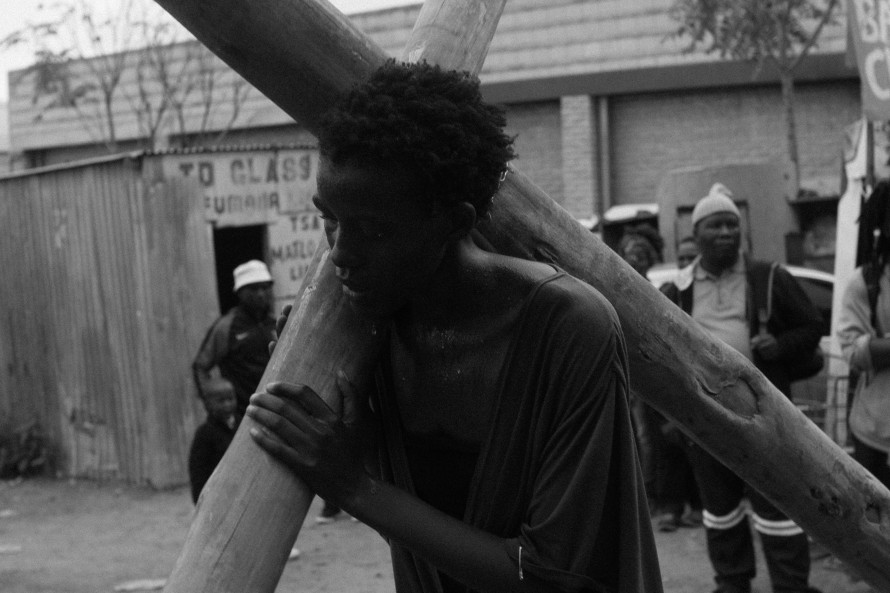
Thato Khobotle in Mother, I Am Suffocating. This Is My Last Film About You. by Lemohang Jeremiah Mosese
In Mother, I Am Suffocating. This Is My Last Film About You. Lemohang Jeremiah Mosese emphasises the image of the cross – a clear reference to the religious sphere. What role does the personal story play here?
BK: Mother, I am Suffocating. This Is My Last Film About You. deals with the filmmaker’s own migration story. The way he cuts the cord with his country of origin, Lesotho, is told in symbolically laden, mystically beautiful black-and-white shots. Here, image and sound are again separated. Off-camera, we hear a woman’s voice who we assume is addressing her mother. But the actual addressee is the motherland. The longer the film goes on, the more it moves from an interior to an exterior perspective of the country. Mother, I am Suffocating. This Is My Last Film About You. is a lament: an elegy which makes tangible the farewell to a homeland.
Likewise, in Heimat ist ein Raum aus Zeit (Heimat Is A Space in Time), Thomas Heise uses personal stories to tell the history of a country...
BK: The extraordinary quality of this film arises indeed from the fact that, using personal experiences from his family archive, Heise tells the 20th century history of Germany from Vienna to Dresden and Berlin – using letters, school essays, children’s drawings and photographs. He explores the traces left behind by people’s lives and the passage of time, and the relationship of one to the other. The film spans the big arc of history from the deportation of the Viennese Jews to the war casualties in Dresden, from the art and everyday life in the GDR to the present day by adding contemporary footage of the places where this family history has unfolded. Heise depicts a panorama and simultaneously constantly questions the possibility of historiography. It’s a great film with a great title: Heimat Is A Space In Time.
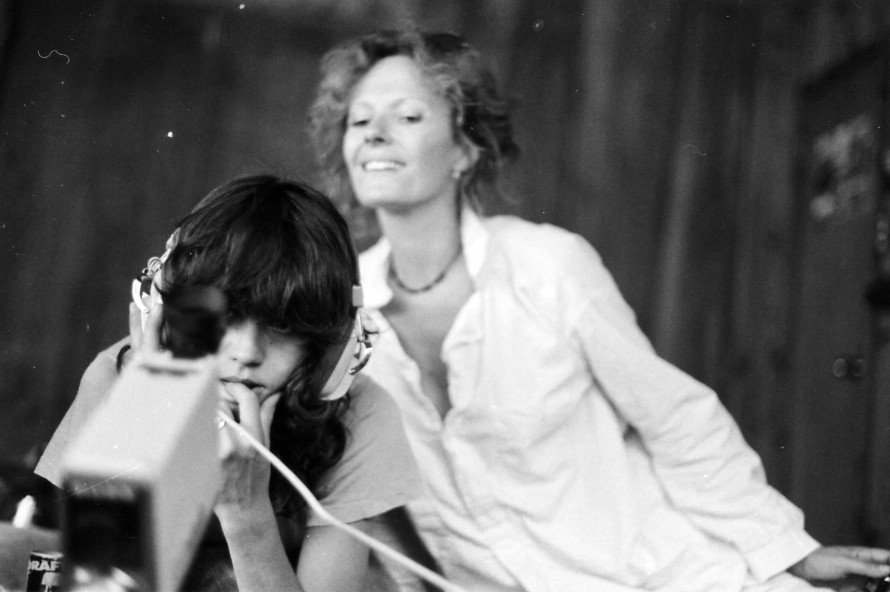
Sois belle et tais-toi ! (Be Pretty and Shut Up!) by Delphine Seyrig
With reference to historiography, in 2019 the Forum and Forum Expanded are reconnecting with the tradition of feminist filmmakers. Can a connection be drawn between the past as portrayed in films such as Delphine et Carole, insoumuses (Delphine and Carole) by Callisto Mc Nulty and today’s #MeToo debate?
BK: Delphine et Carole, insoumuses uses archive footage to tell the story of the French Women’s Movement in the 1970s, of early feminist video activism which engaged predominantly with television. The feminist project utilised political action, media interventions and documentary archiving to tell its own story. It wasn’t just pursued with a lot of power, but also with plenty of humour.
A stronger connection to #MeToo can be found in another film, Sois belle et tais-toi ! (Be Pretty and Shut Up!) from 1976, that was directed by Delphine Seyrig and Carole Roussopoulos – the two protagonists from Delphine et Carole, insoumuses. They interview 24 actresses from France and the US about their situation as women in the film business including Jane Fonda – her interview is genuinely thought-provoking. Watching the footage today, what the women are reporting doesn’t feel at all unusual: the film industry has changed very little. What is much more surprising is that these questions were only then being asked for the first time.
Would it be possible to pick up today where the feminism of the 1970s left off?
BK: We’re organising a discussion that, among other things, will tackle this very question. It’s taking place in the silent green Cupola which we’re using this year as a workshop cinema. After film screenings there, we can debate in greater depth aspects that it’s often impossible to devote enough time to in the regular Q&As. Delphine et Carole, insoumuses is one of the films we’re showing there exactly because it has so many possible points of connection with today. We’ve invited Tatjana Turanskyj to discuss the film with Callisto Mc Nulty. Turanskyj is a feminist filmmaker who has had several works screened in the Forum and who is active in the ProQuote movement.
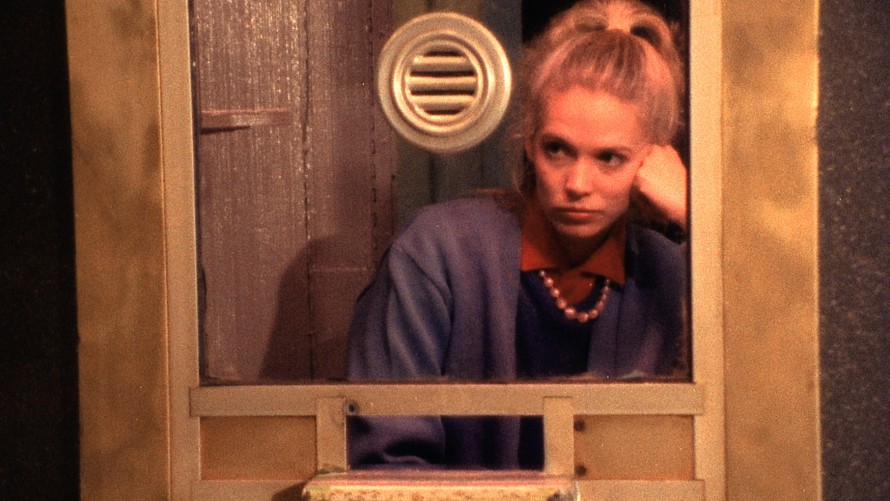
Sandy McLeod in Variety by Bette Gordon
Stefanie Schulte Strathaus: In this context, I’d also like to include Variety. To me, the film is a key work in the way it translates feminist theory into a cinematic form. It was made in 1983. Bette Gordon tells the story of a woman in New York who works at a porn cinema box office. All the men who enter the cinema have to go past her. The classic Hollywood narrative - of the man looking and the woman being looked at – is inverted. That is the basis of the film’s narrative structure. The protagonist begins to follow one of the customers; why she is doing this remains open. The relationship of the gaze is reversed, but without objectifying the other side in return. Thinking about this is extremely relevant for today. Fortunately, equality is now discussed much more than before. But the nature of this discussion frequently loses itself by taking a backwards step to once more relying on binary distinctions. This simple reversal ignores the social matrix this is all about, from which these binaries actually emerge.
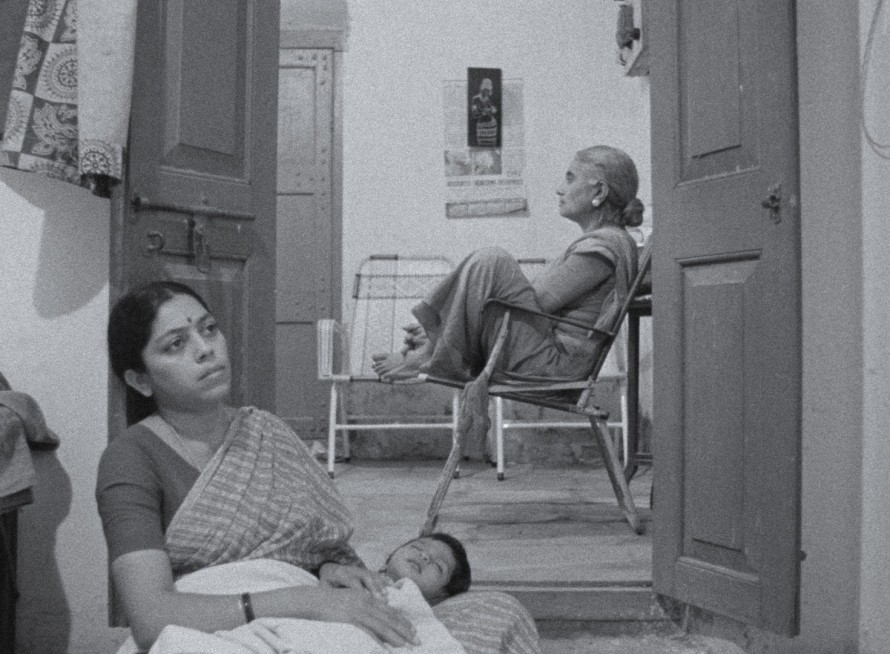
Idhi Katha Matramena (Is This Just a Story?) by the Indian Yugantar collective
Indian feminism has also found a place in the programme...
SSS: Yes. We have restored Tambaku Chaakila Oob Ali (Tobacco Embers) and Idhi Katha Matramena (Is This Just a Story?) by the Yugantar collective from India and they are being screened in Forum Expanded as part of “Archival Constellations”. In the 1980s in India there were collectives which looked at feminist discourse and its intersection with class relations and working conditions. These films were extremely important for the political work and a significant component of the collective experience in the political struggle. Showing these films again has nothing to do with nostalgia. It’s about putting history and the present day in a spatial relationship to each other.
Two further, very different films are also connecting with the past via re-enactment: Fortschritt im Tal der Ahnungslosen (Progress in the Valley of the People Who Don’t Know) by Florian Kunert and Nos défaites (Our Defeats) by Jean-Gabriel Périot...
BK: The re-enactments in Fortschritt im Tal der Ahnungslosen refer primarily to the history of the GDR. The protagonists are former workers at the “Fortschritt” (“Progress”) factory who perform their own history in museums, classrooms and industrial plants. It’s an almost therapeutic processing of the GDR past.
In Nos défaites, pupils at a French secondary school play out scenes of opposition and activism from films about May 1968. At the end of the film, they blockade their school in the context of the “gilets jaunes” movement. And so, film education becomes political activism.
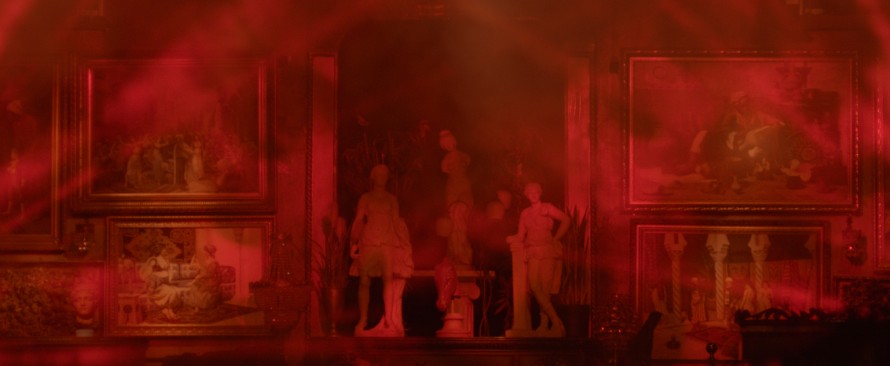
Aidiyet (Belonging) by Burak Çevik
To make a final observation: Aidiyet (Belonging) by Burak Çevik and Gli ultimi a vederli vivere (The Last to See Them) by Sara Summa both play strongly with the knowledge gap between the film and the viewer. Can these two films be compared?
BK: Yes, both tell of a crime that has already taken place and that the audience have already been told about. But the two films take very different formal approaches to this setup. In its opening part, Aidiyet uses very sober images to show various locations while the story of a murder plot and a confession can be heard off-screen. In the film’s second part we learn how the couple responsible for the murder met – a prosaic confession is juxtaposed with a romantic love affair. Gli ultimi a vederli vivere observes an Italian family going about their daily business and the audience knows that none of them will survive the day. We are literally the last ones to see them alive. The film thus becomes a tender requiem.